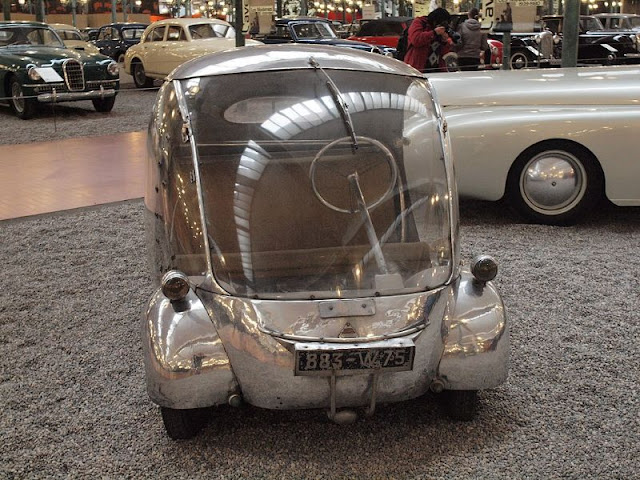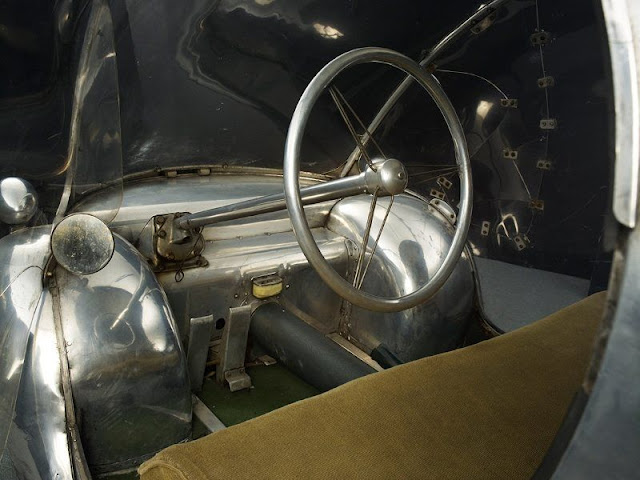L'Œuf électrique (The Electric Egg) was a futuristic prototype concept electric cyclecar designed in 1938, and built in 1942 by industrial designer Paul Arzens (1903-1990). It was acquired by the Musée des Arts et Métiers in Paris in 1993, and is currently at the Cité de l'Automobile in Mulhouse in Alsace.
The spherical bodywork, with a fastback rear, is inspired by interwar cyclecars, and the bionic shapes of an egg, a bubble, or a drop of water. The body is aluminum, over a chassis formed from a Duralinox tube. The windscreen is made of curved Plexiglass, as are the doors. Batteries account for most of the car's 350-kilogram (770 lb) weight.
To circumvent fuel rationing during the German military administration in occupied France during World War II, Arzens used an electric motor, which was powered by five 12-volt batteries located under the bench seat. Each battery had a capacity of 250 ampere hours, and weighed 60 kilograms (130 lb). The car had a top speed of 70 kilometres per hour (43 mph), and a range of 100 kilometres (62 mi).
After the war, Arzens replaced the electric motor with a 125 cc (7.6 cu in) Peugeot single-cylinder petrol engine, which produced 5.5 horsepower (4.1 kW). This resulted in an increase in the car's top speed, to 80 kilometres per hour (50 mph).
Here below is a set of amazing photos of 1942 L'Œuf électrique.






















0 comments:
Post a Comment